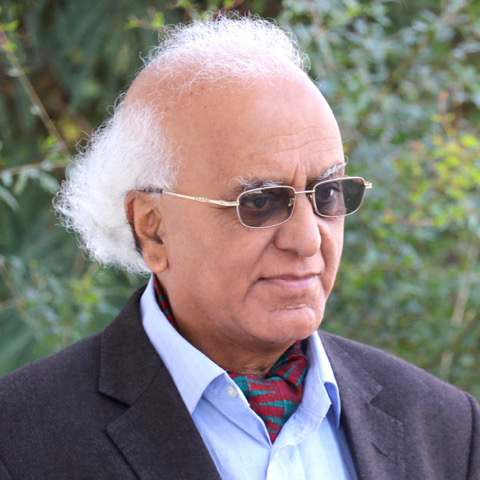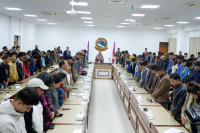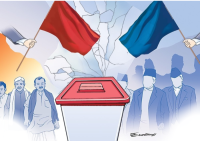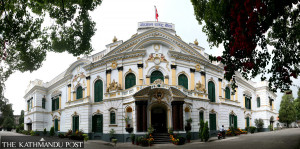Columns
Challenges of ideological quests
Communist parties in Nepal appear to be grappling with a certain sense of angst.
Abhi Subedi
Nepal has been preoccupied in recent days, especially after the Gen Z uprising, with the quest for a model of socio-political actions. The other concern is finding the right idioms to define the psychology of alterity, a concept long practised by different political parties and social groups. I had never seen or experienced such a moment in the country. The uprising is also a moment of awakening and self-reflection for political parties and ideological groups. One espouses certain ideologies or philosophies about the principles of organising the affairs of the state and planning one’s actions in government or public life.
Broadly, I have always been aware of two models of politics: One oriented towards dictatorship and the other towards democracy. A democratic state of politics is established by toppling the dictatorial models of government. Nepalis have traversed a long path of history by fighting against various authoritarian regimes and establishing democratic political orders. We are now in a democratic state of order established after a long struggle and the sacrifice of the people. For heuristic reasons, I recently re-read Professor Lok Raj Baral’s latest book, Nepal: From Monarchy to Republic (2023), which describes this pivotal position in Nepali political history. This book gives an introductory critical view of the vicissitudes and various moments of modern Nepali history that we are reviewing now.
At this moment, Nepal is experiencing a unique moment in history. This is all propelled by the uprising of the Gen Z-ers. Established political parties that have always organised their actions based on their ideologies and activities are, in some cases, grappling with the very structures and ideologies they have espoused and promoted over the years. The communists are experimenting with the organisational models of actions. They seem to be fighting with a certain sense of angst that scholars today view as a feature that aptly describes the state of challenge they are experiencing. Nepal gives an interesting example of the formations and actions of multiple communist parties. In the aftermath of the Gen Z uprising, the communists in Nepal, organised under various names, have been rushing through different action plans. The most spectacular one is the announcement of the unity of nine or so communist parties under one banner on November 5. But the other major communist party, the CPN-UML, remains outside the pattern, and so do at least three other communist parties.
To dwell a little on the communists in Nepal, I would like to present a narrative that offers a glimpse into the early history of the ground-level popularity of the communists in Nepal. It is the story of a simple and humble person, whose preoccupation with ideology represents a broader psychology of people who had complete faith in what they believed. Those who are in search of idioms today may find such histories revealing.
A communist cousin of mine was very preoccupied with what he called the siddhanta, which may be translated in political parlance as ideology for convenience. Later, he became very close to Manmohan Adhikari, whom he considered the truest ideologue in the world. Little did he worry about the wider semantics of ideology. He was a very charitable person. He was influential, especially at the time of elections. He was an archetype of a classical and simple Nepali communist who would think that only communists could send rockets or Sputniks to outer space. Sitting by the roadside, he waited for the weary travellers whom he did not know before and invited them to stay in the village for the night. But he asked each one of them what their ideology was. He did not mind if the itinerant’s siddhanta was different from what he so passionately nourished in his mind. He would be happy if the weary visitor to our village, Sabala of Terathum district, would tell his ‘ideology’ to him.
My cousin took his minuscule left-wing obsession for a kind of Dharma, though he did not have any religious faith. He had a caveat about my siddhanta because he never knew clearly whether I was a communist or not. In subsequent years, when I met Manmohan Adhikari, I talked to him about my cousin, whom he liked for his faith and ‘dedication’. Adhikari said, “Mitralal’s faith reflects the spirit of communist ideology”. Adhikari alluded to Marx’s German Ideology; he was a studious person. A communist-led government should be the target of the communists in Nepal, Adhikari believed. That was precisely the wish of a very unlikely visitor to Nepal, the famous American leftist academic and scholar Frederic Jameson, who was giving us a lecture on literary theory in Kathmandu in November 1993. He wanted to meet Manmohan Adhikari, whom I approached and arranged the meeting.
Professor Jameson told Adhikari that the most important thing for the Nepali communists to do was to form a government and appoint a communist prime minister, which would set a standard for the future. Coincidentally, Adhikari became the first communist prime minister of Nepal in November 1994, exactly one year after the meeting with Jameson. After he assumed office, he went on a visit to India, where the pioneering communist leader of India, EMS Namboodiripad, was also waiting to meet the communist prime minister of Nepal. They met in Delhi.
The moral of this narrative is simple. In Nepal, the communist parties have formed several governments and appointed prime ministers. However, at this stage, they seem to be grappling with a certain angst and reviewing history. Formations of coalitions and fragmentations demonstrate that. This is happening at a fast pace after the Gen Z uprising.
Then the question comes, what does Gen Z represent in Nepali politics? It has become clear; it represents a new energy and a call to deconstruct old values related to generational leadership in parties. The Nepali Congress, the so-called largest political party, is debating whether the young generation inspired by the Gen Z awakening should lead the party and contest the election. Thanks to Rajendra Maharjan, Kantipur, on November 3, published an article written by Congress leader BP Koirala in 1981 titled “youths in my view”. Koirala, the first elected prime minister of Nepal, is optimistic about the role of the youths in matters of organising politics and generating a positive force for change in the country.
The stereotypes of party ideologies and modes of organisation have changed. There is a call to act in a new spirit, breaking certain stereotypes at this juncture in time.




 19.12°C Kathmandu
19.12°C Kathmandu















